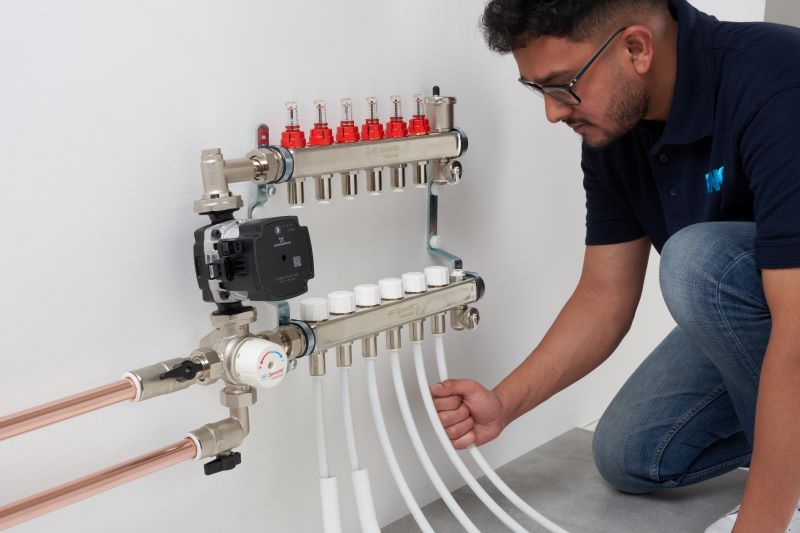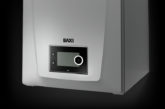
Richard Bateman, Product Marketing Manager at RWC, provides five ways installers and specifiers can make multi-occupancy buildings more sustainable.
Cities across the UK have been experiencing rapid growth over recent decades and, as their populations have expanded, so too have their buildings. Today, multi-occupancy properties are commonplace in urban environments, with high-rise residential buildings also becoming familiar features. As these buildings become more popular to house the growing population, sustainability needs to be a core focus, with plumbing and heating playing a key role.
To adequately supply individual units within multi-occupancy buildings, both a commercial and domestic plumbing and heating system will typically be required. While this means that there is a greater chance of inefficiencies arising due to a larger and more complex system, it also creates greater opportunities to improve efficiency, performance, and sustainability.
Here are five key considerations to keep in mind through both the specification and installation phases.
Enabling heat efficiency with underfloor heating
When opting for underfloor heating (UFH) – which is being widely adopted in domestic properties to improve comfort and sustainability – specifiers will need to consider the floor construction throughout the building.
Just as in a traditional domestic setting, establishing the floor construction in a multi-occupancy building is key to ensuring the most effective UFH solution is selected. It’s common to see screeded solid floors constructed from concrete block and beams within these buildings, however, it’s also likely that the floor could be constructed from standard timber substrates – therefore, identifying the type of sub floor is essential as there are specific solutions for each.
When retrofitting an UFH system in a multi-occupancy building with a concrete block and beam floor construction, a low-profile system is the most cost effective and practical option. One such solution from JG Underfloor – the JG LowFit Castellated Panels for 12 or 15mm pipe – can be installed directly over solid floors, delivering a high heat output at lower flow temperatures, while also keeping floor height build up to a minimum, only raising it by 21-25mm.
Reducing connections
As more apartments are housed within single buildings, one area of plumbing that becomes more difficult and time-consuming for installers is the assembly of the single chain of valves supplying water from the mains to individual apartments. In addition to being time consuming to connect, having to make many connections poses an increased risk of leaks occurring.
This is where the Tenant Valve from Reliance Valves can be of great benefit, controlling and monitoring water supply to multiple units. The valve’s single unit cartridge design requires only two connections to be made, which ensures a quick installation for plumbers, while the valve itself takes up much less space in comparison to its chain valve counterpart.
Detecting leaks
In addition to installing leak-reducing solutions, new technologies can detect leaks as they occur, and prevent them causing damage to homes and disruption for residents. The Reliance Valves MultiSafe Leak Detector does exactly that. Upon detecting a leak, the system shuts off an inbuilt isolation valve, cutting off water to the affected area, while alerting the building owner that a leak has occurred.
Additionally, the system has a self-learning element, which means it is able to adjust the flow of water to different areas of a building, based on how much the system predicts is required by each unit. This optimises the water usage, and in turn, building sustainability.
Keeping track of flow rates
In addition to leaks, one of the major causes of water losses in multi-occupancy buildings is poor flow control. This can lead to more water than necessary coming out of an outlet. This is much more of an issue in multi-occupancy buildings, where there is a greater volume of outlets across multiple dwellings.
To overcome this issue and prioritise sustainability, a balance must be achieved between water pressure and water usage. To make this possible, Reliance Valves’ Floreg Isolating Valve and Strainer can be used to maintain flow rates at the desired level, between 4 and 15 litres per minute, ultimately reducing water usage and energy consumption.
Staging PRVs
Tying into flow regulation, the staging of pressure reducing valves (PRVs) can create more sustainable water usage practices. Multi-occupancy buildings fall under the category of commercial buildings, which receive water at a pressure as high as 15 bar. So, while a high pressure will ensure water reaches every corner of the building, 15 bar is far too high to be safely discharged from an outlet, making PRVs essential.
Most PRVs have an operating ratio in which they can perform safely. For example, a valve with a ratio of 3:1 would be able to take in a water pressure of 12 bar and output no less than 4 bar safely. This means that multiple PRVs are required to reach a safe outlet pressure, which is why staging PRVs is important.
Typically, one PRV would be installed on each floor of the building, and then a second PRV directly connected to each apartment. Staging PRVs stabilises the flow rate of the water, which allows the PRV directly connected to the apartment or hotel room to make more efficient use of the water it receives.
The Tenant Valve has an inbuilt PRV, which can act as the valve that connects to each apartment, however, the water must have passed through an initial PRV before it reaches this stage. Amongst the PRVs offered by Reliance Valves is the Commercial 315i Series Pressure Reducing Valve, which has a pressure ratio of 10:1, meaning it can reduce a water pressure of 20 bar to 2 bar, without any risk of damage.
With more people calling multi-occupancy buildings home, conserving water and energy as much as possible becomes an increasingly pressing concern. These systems are key to supporting our combined sustainability efforts to preserve water and energy at every point of use.













